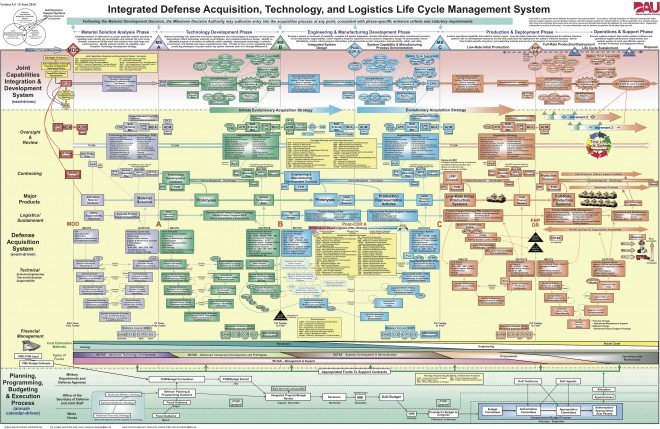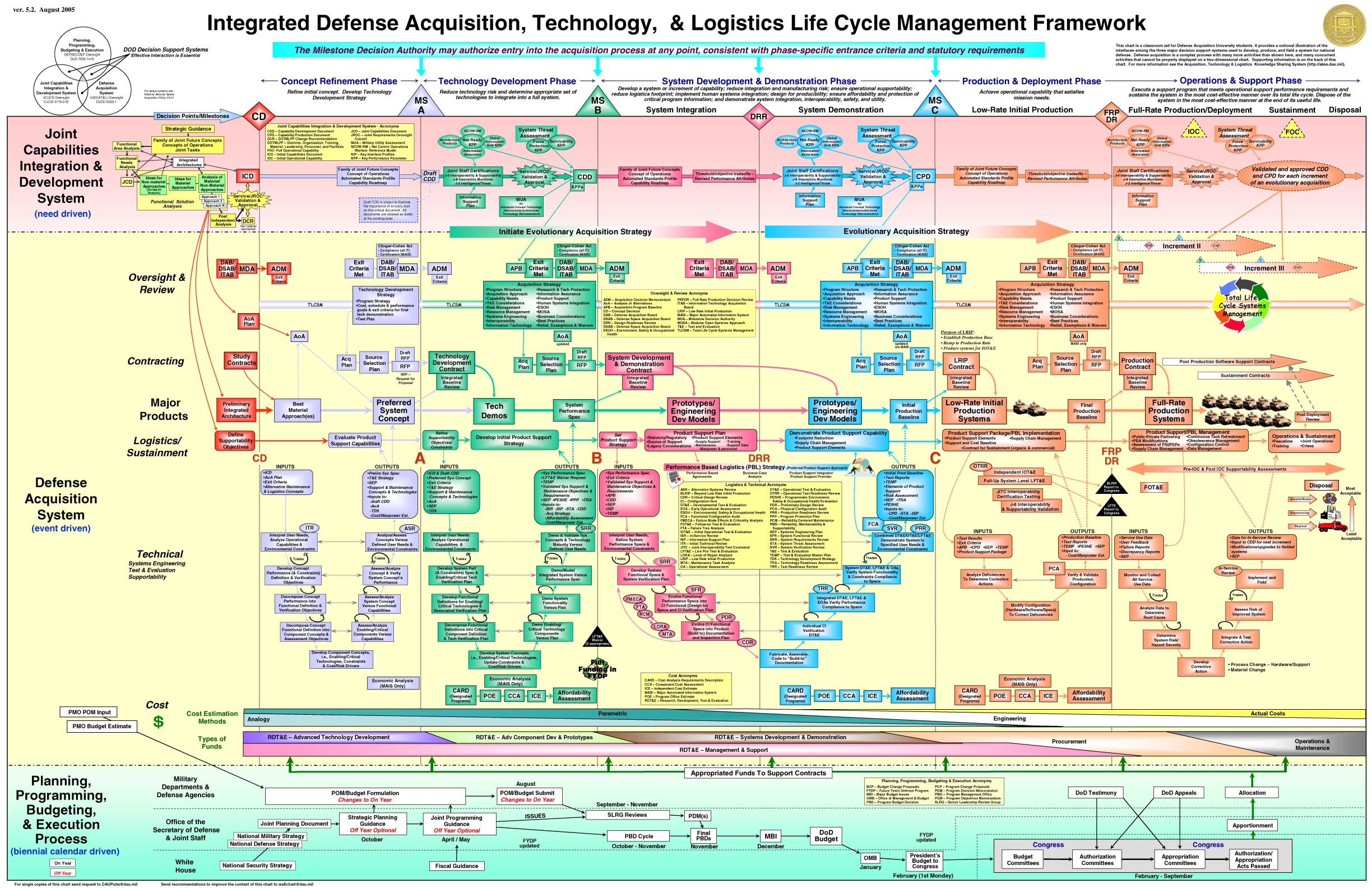I attended an evening affair recently with a well respected leader who reminded me that the old maximum “Where you stand, depends on where you sit” was actually memorialized by Rufus Miles of Princeton University back in the 70’s. Anyone who has ever been in a bureaucracy knows exactly what he means. I myself am a slave to Miles Law. And not only when I was lurking around the bureaucracy of the Pentagon, but even afterwards in my second career. It’s not a bad thing, by the way. In fact, if you are to be a loyal member of any organization, you will be dealing with the outcomes of the Miles Law. I recall my first job on the OPNAV staff as the Deputy N81 (Assessments). At various meetings in the Pentagon the inevitable “What are they thinking in the Fleet?”, was heard time and time again. We were sure they just didn’t understand the problems we were dealing with and their solutions seemed untenable. Then I got back to the Fleet, and at just about every meeting I would hear, “What are they thinking in the Pentagon?” And so it goes. The point is ones perspective is always shaped by the environment, business or otherwise. Once I retired from active duty and become a “contractor”, within a matter of a few months I just couldn’t figure out what my former colleagues in the Pentagon could be doing….They should be doing it our way!!!!
Anyone who has ever been in a bureaucracy knows exactly what he means. I myself am a slave to Miles Law. And not only when I was lurking around the bureaucracy of the Pentagon, but even afterwards in my second career. It’s not a bad thing, by the way. In fact, if you are to be a loyal member of any organization, you will be dealing with the outcomes of the Miles Law. I recall my first job on the OPNAV staff as the Deputy N81 (Assessments). At various meetings in the Pentagon the inevitable “What are they thinking in the Fleet?”, was heard time and time again. We were sure they just didn’t understand the problems we were dealing with and their solutions seemed untenable. Then I got back to the Fleet, and at just about every meeting I would hear, “What are they thinking in the Pentagon?” And so it goes. The point is ones perspective is always shaped by the environment, business or otherwise. Once I retired from active duty and become a “contractor”, within a matter of a few months I just couldn’t figure out what my former colleagues in the Pentagon could be doing….They should be doing it our way!!!!
So remember when you are in the next meeting where you think your organization has the market cornered on the thinking on some issue, there are others out there just as passionate (and probably just as right) as you are. Where you stand indeed depends on where you sit. Realizing that might make things go a little smoother.
Now for the six maxims related to Miles Law. As you read them, I think you will find that they offer some invaluable insights into how to deal with your superiors and those who work with and for you.
Maxim #2. The responsibility of every manager exceeds his authority, and if he tries to increase his authority to equal his responsibility, he is likely to diminish both. The lesson here is don’t worry too much about matching power with responsibility. It’s the way the system is designed and if you attempt to twiddle with it, you are asking for trouble.
Maxim #3. Managers at any level think they can make better decisions than either their superiors or their subordinates; most managers, therefore seek maximum delegations from their superiors and make minimum delegations to their subordinates. As a leader, you will be pulled in many directions and in order to be effective, you must delegate….the trick is knowing your people and their capabilities so you can delegate the right things to the right people and keep you focus on what you should be focused upon.
Maxim #4: Serving more than one master is neither improper nor unusually difficult if the servant can get a prompt resolution when the masters disagree. Boy can I relate to this one…In the military, we are often “Dual Hatted” or holding down more than one job with more than one boss. In fact, even with one job you can easily find yourself with more than one boss. Keeping #4 in mind will help you in managing the expectations of both (maybe even several) bosses. Communicate early and often with your bosses and make sure they all have the same version of the truth!
Maxim #5. Since managers are usually better talkers than listeners, subordinates need courage and tenacity to make their bosses hear what they do not want to hear. My observations are that managers have a monopoly on talking without listening. Force yourself to listen…you will be surprised at what you hear. This is true no matter the circumstances; whether you are on a cold call with a prospective client, or sitting in a community association meeting. Too much talk, talk, talk…My advice………listen for a change.
Maxim #6: Being two-faced–one face for superiors and one face for subordinates– is not a vice but a virtue for a program manager if he or she presents his or her two faces openly and candidly. I have no idea what this means, but it sure sound profound.
Maxim #7: Dissatisfaction with services tends to rise rapidly when the provider of the services becomes bureaucratically bigger, more remote , and less flexible, even if costs are somewhat lower. Of all the maxims, this is one which is applicable in almost anything when it comes to bureaucracies, or even companies. You have to constantly keep yourself in tune with your clients….refer to Maxim #5….., listening to what they have to say.  Be vigilant that your organization is not morphing into the ubiquitous “Self Licking Ice Cream Cone”, existing not for providing services to clients, but for its own pleasure. By the way, by far, my article on Self Licking Ice Cream Cones is and continues to be the number one article people view when visiting my web site.
Be vigilant that your organization is not morphing into the ubiquitous “Self Licking Ice Cream Cone”, existing not for providing services to clients, but for its own pleasure. By the way, by far, my article on Self Licking Ice Cream Cones is and continues to be the number one article people view when visiting my web site.
So there they are…I thought it worth putting to paper because I think they are things that leaders need to be aware of as they go about leading from day-to-day. If nothing else, I’ll bet each and every one of you Govies reading this have experience in all of these (even #6, whatever it means)
If you would like to read the famous paper by Professor Miles, here is a link to a site that will allow you to purchase a copy ($25).






 Granted they do make a few hard choices, but none of them are the budget choices they are making for the FY15 budget that’s on the Hill right now. They have so much money to deal with that the normal ways in which you or I would deal with problems is not possible. There are several reasons why I believe the tough choices are not possible. In fact, in the Pentagon the toughest choices are actually the easiest. Take for example the luxury of scale. Because of the vast quantity of money the Pentagon has, scale makes things easy. Let’s just say for the sake of argument that the total Pentagon budget for 2015 will be around $550 Billion. I’m working on the budget and I need to come up with $5oo million to pay for my “widget ” program because it’s two years behind schedule and Congressional support is waning. I dare not go to the Hill and ask for more money. What tough choices can I make? How about I assume the inflation rate for next year will be 0.1% less than it currently is….Guess what? Instant $550 Million in my pocket. Problem solved!
Granted they do make a few hard choices, but none of them are the budget choices they are making for the FY15 budget that’s on the Hill right now. They have so much money to deal with that the normal ways in which you or I would deal with problems is not possible. There are several reasons why I believe the tough choices are not possible. In fact, in the Pentagon the toughest choices are actually the easiest. Take for example the luxury of scale. Because of the vast quantity of money the Pentagon has, scale makes things easy. Let’s just say for the sake of argument that the total Pentagon budget for 2015 will be around $550 Billion. I’m working on the budget and I need to come up with $5oo million to pay for my “widget ” program because it’s two years behind schedule and Congressional support is waning. I dare not go to the Hill and ask for more money. What tough choices can I make? How about I assume the inflation rate for next year will be 0.1% less than it currently is….Guess what? Instant $550 Million in my pocket. Problem solved!